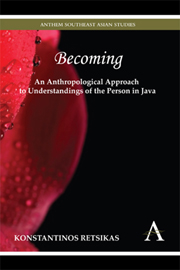Book contents
- Frontmatter
- Contents
- List of Maps and Figures
- Acknowledgements
- Prolegomenon
- Map
- Chapter 1 The Becoming of Place: Moving, Clearing, Inhabiting
- Chapter 2 The Perception of Difference: Embodying, Reversing, Encompassing
- Chapter 3 The Blood of Affinity: Marrying, Procreating, Housing
- Chapter 4 Matters of Scale: Feeding, Praying, Sharing
- Chapter 5 A Pulsating Universe: Annihilating, Enhancing, Magnifying
- Chapter 6 The Marital and the Martial: Gendering, Killing, Oscillating
- Epilogue
- Bibliography
- Index
Chapter 4 - Matters of Scale: Feeding, Praying, Sharing
Published online by Cambridge University Press: 05 November 2012
- Frontmatter
- Contents
- List of Maps and Figures
- Acknowledgements
- Prolegomenon
- Map
- Chapter 1 The Becoming of Place: Moving, Clearing, Inhabiting
- Chapter 2 The Perception of Difference: Embodying, Reversing, Encompassing
- Chapter 3 The Blood of Affinity: Marrying, Procreating, Housing
- Chapter 4 Matters of Scale: Feeding, Praying, Sharing
- Chapter 5 A Pulsating Universe: Annihilating, Enhancing, Magnifying
- Chapter 6 The Marital and the Martial: Gendering, Killing, Oscillating
- Epilogue
- Bibliography
- Index
Summary
A topography of relations
Neither siblingship nor the House are limited to wombs and dwellings. The present chapter charts the becoming-siblings involved in the enactment of relations among neighbours (tetenggha, Mad.). Of primary importance in this becoming is the circulation of detachable parts of personhood occurring in ritual occasions. The circulation of food, potent speech and ancestors within the frame of communal rice meals conceals the difference that marks the persons of neighbours as separate and distinct. Ritual circulations therefore correspond to a specific technology for the momentary eclipsing of difference and act to establish the neighbourhood as a House of a higher scale. The neighbourhood (kampong, Mad.) is made manifest as a worship community whose members relate to each other as siblings: in the process of ritual participation they come to share not only the same space but also the same ancestors and the same food.
In topographical terms, Alas Niser is comprised of single houses and larger compounds, connected with an array of narrow streets leading to front porches and a multitude of paths that spring out of kitchens located at the back. Both single houses and compounds designated by the term tanean (Mad., yard, also homestead) are Houses in that they register relations of siblingship. As we have seen in the previous chapter, single houses encompass two distinct kinds of siblings. The first is the married couple, which address each other as elder brother/younger sister for the period immediately following their marriage, until the arrival of the first offspring.
- Type
- Chapter
- Information
- Publisher: Anthem PressPrint publication year: 2012



